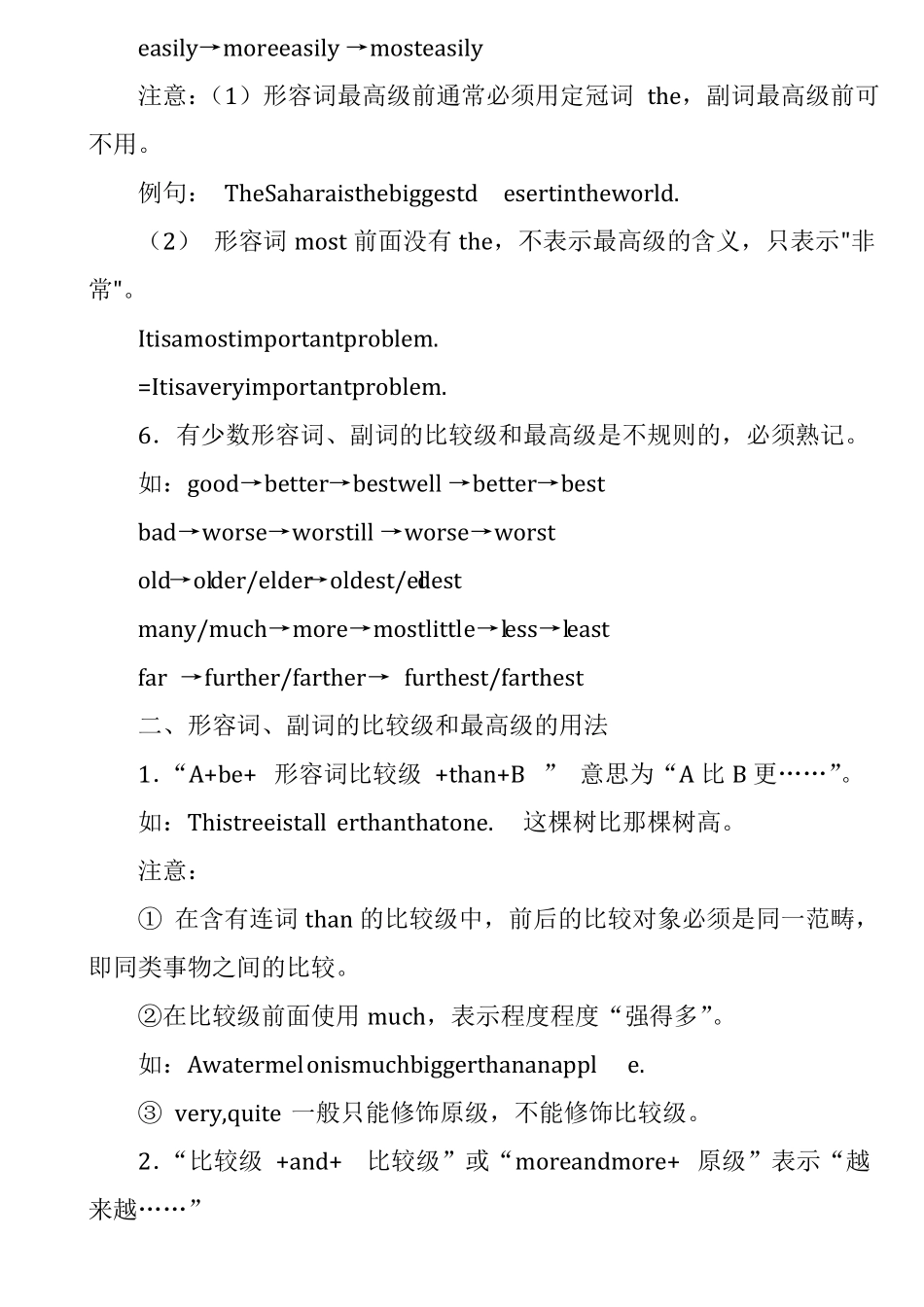形容词副词的比较级最高级——用法及练习题一、形容词、副词的比较级和最高级的构成规则1.一般单音节词和少数以-er,-ow 结尾的双音节词,比较级在后面加-er,最高级在后面加-est;(1)单音节词如:small→smaller→smallestshort →shorter→shortesttall→taller→tallestgreat→greater→greatest(2)双音节词如:clever→cleverer→cleverestnarrow →narrower→narrowest2.以不发音 e 结尾的单音节词,比较在原级后加-r,最高级在原级后加-st;如:large→larger→largestnice→nicer→nicestable→abler→ablest3.在重读闭音节(即:辅音+元音+辅音)中,先双写末尾的辅音字母,比较级加-er,最高级加-est;如:big→bigger→biggesthot →hotter→hottestfat →fatter→fattest4.以“辅音字母+y”结尾的双音节词, 把 y 改为 i,比较级加-er,最高级加-est;如:easy→easier→easiestheavy →heavier→heaviestbusy→busier→busiesthappy →happier→happiest5.其他双音节词和多音节词,比较级在前面加 more,最高级在前面加 most;如:beautiful→morebeautiful →mostbeautifuldifferent→moredifferent →mostdifferenteasily→moreeasily →mosteasily注意:(1)形容词最高级前通常必须用定冠词 the,副词最高级前可不用。例句: TheSaharaisthebiggestdesertintheworld.(2) 形容词 most 前面没有 the,不表示最高级的含义,只表示"非常"。Itisamostimportantproblem.=Itisaveryimportantproblem.6.有少数形容词、副词的比较级和最高级是不规则的,必须熟记。如:good→better→bestwell →better→bestbad→worse→worstill →worse→worstold→older/elder→oldest/eldestmany/much→more→mostlittle→less→leastfar →further/farther→ furthest/farthest二、形容词、副词的比较级和最高级的用法1.“A+be+ 形容词比较级 +than+B ” 意思为“A 比 B 更……”。如:Thistreeistall erthanthatone.这棵树比那棵树高。注意:① 在含有连词 than 的比较级中,前后的比较对象必须是同一范畴,即同类事物之间的比较。②在比较级前面使用 much,表示程度程度“强得多”。如:Awatermelonismuchbiggerthananapple.③ very,quite 一般只能修饰原级,不能修饰比较级。2.“比较级 +and+比较级”或“moreandmore+ 原级”表示“越来越……”如:Itbecomeswarmerandwarmerwhenspr...


